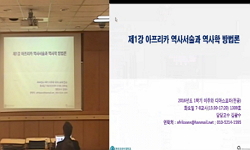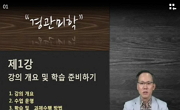In studying how overseas Chinese living in Chinatown and Incheon area perceive space and place and practice such perceptions this dissertation aims to examine in a concrete way cultural identity of overseas Chinese in Korea and the mechanism of social...
http://chineseinput.net/에서 pinyin(병음)방식으로 중국어를 변환할 수 있습니다.
변환된 중국어를 복사하여 사용하시면 됩니다.
- 中文 을 입력하시려면 zhongwen을 입력하시고 space를누르시면됩니다.
- 北京 을 입력하시려면 beijing을 입력하시고 space를 누르시면 됩니다.
한국 화교(華僑)의 사회적 공간과 장소: 인천 차이나타운을 중심으로
한글로보기https://www.riss.kr/link?id=G3791887
- 저자
-
발행기관
-
-
발행연도
2007년
-
작성언어
Korean
- 주제어
-
자료형태
한국연구재단(NRF)
-
0
상세조회 -
0
다운로드
부가정보
다국어 초록 (Multilingual Abstract)
Incheon community of overseas Chinese is a kind of spatial enclave that expands beyond the physical place of Chinatown. This moral and communal space is where social relations and status are formed and mutual economic activities take place. The important cultural principles operating in this social space are not only the basic principles found in the mother land China such as guanxi (關係), renqing (人情), mianzi (面子), and bao (報) but also other economical and political practices related to family like marriage and funeral, rotating savings and credit associations (hui, 會), and banquets (qingke, 請客).
Spatial perception of overseas Chinese in Korea goes back to the Qing Chinese settlement of the late 19th century. From their perspective, they first settled in the Qing Chinese Settlement area created by the international treaty of 1884 but were forced to disperse gradually when the settlement was abolished in 1913 after the annexation of Korea to Japan. In other words, they became an internal diasporic people. Especially after the 1960s, most of overseas Chinese communities were disintegrated and many overseas Chinese turned to low end restaurant business for survival in face of the anti-foreigners land acquisition act and urban planning of the South Korean government. Having dispersed to different cities they can only affirm their cultural identity through social and family events like hui, wedding, funeral, and other annual events. They became more and more a spatial community instead of a territorial community. What they wanted was a legal territory of their own within the residing country. In case of Korea, they wanted the mother land and the South Korean government to protect their own culture different from that of the residing country. Nevertheless, the policy of homogeneous nation pursued by the South Korean government pushed overseas Chinese further onto the margin and to poverty. Their mother land China which supposed to be their refuge was cut off from South Korea after becoming a communist state. At the same time, their state of nationality, Taiwan, slowly lost its status in the international community. As they turned to low end restaurant business they even began to lose their cultural pride which they had while living in the residing country.
A new period for the overseas Chinese in Korea began when South Korea normalized its relations with China in 1992. Soon after, the South Korean government reformed the foreigners’ land acquisition act and announced the plan to re-develop Chinatown. Although Chinatown was planned by the South Korean central government and Incheon city government as a special zone for tourism development, the new plan was perceived by overseas Chinese as a restoration of their legal settlement area where their unique ethnic identity would be preserved. As they regained the once lost sense of territory many expected that they will reconstruct a new community in Chinatown. These strategies are an important example of diversity of ethnicity or identity that appears when multiple cultures come into contact.
In studying how overseas Chinese living in Chinatown and Incheon area perceive space and place and practice such perceptions this dissertation aims to examine in a concrete way cultural identity of overseas Chinese in Korea and the mechanism of social change in Chinatown.
Incheon community of overseas Chinese is a kind of spatial enclave that expands beyond the physical place of Chinatown. This moral and communal space is where social relations and status are formed and mutual economic activities take place. The important cultural principles operating in this social space are not only the basic principles found in the mother land China such as guanxi (關係), renqing (人情), mianzi (面子), and bao (報) but also other economical and political practices related to family like marriage and funeral, rotating savings and credit associations (hui, 會), and banquets (qingke, 請客).
Spatial perception of overseas Chinese in Korea goes back to the Qing Chinese settlement of the late 19th century. From their perspective, they first settled in the Qing Chinese Settlement area created by the international treaty of 1884 but were forced to disperse gradually when the settlement was abolished in 1913 after the annexation of Korea to Japan. In other words, they became an internal diasporic people. Especially after the 1960s, most of overseas Chinese communities were disintegrated and many overseas Chinese turned to low end restaurant business for survival in face of the anti-foreigners land acquisition act and urban planning of the South Korean government. Having dispersed to different cities they can only affirm their cultural identity through social and family events like hui, wedding, funeral, and other annual events. They became more and more a spatial community instead of a territorial community. What they wanted was a legal territory of their own within the residing country. In case of Korea, they wanted the mother land and the South Korean government to protect their own culture different from that of the residing country. Nevertheless, the policy of homogeneous nation pursued by the South Korean government pushed overseas Chinese further onto the margin and to poverty. Their mother land China which supposed to be their refuge was cut off from South Korea after becoming a communist state. At the same time, their state of nationality, Taiwan, slowly lost its status in the international community. As they turned to low end restaurant business they even began to lose their cultural pride which they had while living in the residing country.
A new period for the overseas Chinese in Korea began when South Korea normalized its relations with China in 1992. Soon after, the South Korean government reformed the foreigners’ land acquisition act and announced the plan to re-develop Chinatown. Although Chinatown was planned by the South Korean central government and Incheon city government as a special zone for tourism development, the new plan was perceived by overseas Chinese as a restoration of their legal settlement area where their unique ethnic identity would be preserved. As they regained the once lost sense of territory many expected that they will reconstruct a new community in Chinatown. These strategies are an important example of diversity of ethnicity or identity that appears when multiple cultures come into contact.
국문 초록 (Abstract)
인천 화교사회는 차이나타운이라는 구체적인 장소를 넘어선 일종의 ‘공간적 엔클레이브’(spatial enclave)를 형성하고 있으며, 사회적 관계 및 지위, 상호 경제적인 활동도 이 도덕적인 공동체적 공간 내에서 이루어지는 특징을 가진다. 인천 화교들의 이러한 공간적 인식은 청국인들이 한국에 이주하기 시작했던 구한말 조계지에서부터 그 연원을 찾아볼 수 있다. 한국 화교들의 관점에서 보자면, 이들은 역사적으로 1884년 국제 조약에 의한 ‘합법적’ 영토인 조계지를 통해 처음 한국에 들어왔으며 한일합방 이후인 1913년 조계지가 폐지되면서 지속적으로 자신의 영토에서 흩어지는 양상, 즉 내부적인 디아스포라를 겪었다. 특히 1960년대 이후 한국정부에 의한 외국인 토지법과 도시개발로 인해 공동체적 화교 촌락들은 거의 모두 해체되었으며 화교들은 대부분 직종을 요식업으로 전환하기에 이른다. 이들은 도시의 각 지역에 흩어져 살면서 후이(會)나 결혼식, 장례식, 연례행사 등을 통해 모여 자신들의 공동체성을 확인할 수밖에 없었다. 즉, 한국 화교들은 ‘영토에 근거한 공동체’에서 점점 ‘공간적 공동체’로 삶의 방식이 바뀌어온 것이다.
이러한 한국 화교들에게 새로운 전기(轉機)가 마련되기 시작한 것은 1992년 한중수교에 이은 1998년의 외국인토지법의 개정 및 차이나타운의 개발이었다. 특히 차이나타운은 비록 거주국의 중앙정부와 지방정부가 관광자원을 창출하기 위해 만든 특수한 구역이었지만, 결과적으로 화교들에게 있어서는 에스닉 집단의 특수성을 인정해 주는 일종의 합법적인 ‘영토’로 인식되었다. 그동안 잃고 살았던 영토감각이 생기기 시작하면서 화교들은 차이나타운 안에서 새로운 공동체적 질서를 만들고자 한다. 이들은 차이나타운 내의 다양한 집단들과의 협상과정에서 근대 국가들이 그동안 사용해왔던 정치적 방식을 사용하는데, 외부적으로는 인종적 차이의 강조, 내부적로는 경계의 설정과 같은 전략들이 그것이다. 이를 통해 화교들은 차이나타운 내에서 자신들의 우위를 점하려고 한다. 차이나타운에서의 이러한 화교들의 전략은 각기 다른 접촉과 상황 속에서의 정체성 혹은 에스니시티의 다양성을 보여주는 중요한 사례가 된다.
본 논문은 인천 및 차이나타운 거주 화교(華僑)들이 어떤 방식으로 공간과 장소를 인지하고 실천하는지에 대해 연구함으로써 구체적인 화교사회 변화의 메커니즘과 문화적 정체성을 탐구하...
본 논문은 인천 및 차이나타운 거주 화교(華僑)들이 어떤 방식으로 공간과 장소를 인지하고 실천하는지에 대해 연구함으로써 구체적인 화교사회 변화의 메커니즘과 문화적 정체성을 탐구하는 것을 목적으로 한다.
인천 화교사회는 차이나타운이라는 구체적인 장소를 넘어선 일종의 ‘공간적 엔클레이브’(spatial enclave)를 형성하고 있으며, 사회적 관계 및 지위, 상호 경제적인 활동도 이 도덕적인 공동체적 공간 내에서 이루어지는 특징을 가진다. 인천 화교들의 이러한 공간적 인식은 청국인들이 한국에 이주하기 시작했던 구한말 조계지에서부터 그 연원을 찾아볼 수 있다. 한국 화교들의 관점에서 보자면, 이들은 역사적으로 1884년 국제 조약에 의한 ‘합법적’ 영토인 조계지를 통해 처음 한국에 들어왔으며 한일합방 이후인 1913년 조계지가 폐지되면서 지속적으로 자신의 영토에서 흩어지는 양상, 즉 내부적인 디아스포라를 겪었다. 특히 1960년대 이후 한국정부에 의한 외국인 토지법과 도시개발로 인해 공동체적 화교 촌락들은 거의 모두 해체되었으며 화교들은 대부분 직종을 요식업으로 전환하기에 이른다. 이들은 도시의 각 지역에 흩어져 살면서 후이(會)나 결혼식, 장례식, 연례행사 등을 통해 모여 자신들의 공동체성을 확인할 수밖에 없었다. 즉, 한국 화교들은 ‘영토에 근거한 공동체’에서 점점 ‘공간적 공동체’로 삶의 방식이 바뀌어온 것이다.
이러한 한국 화교들에게 새로운 전기(轉機)가 마련되기 시작한 것은 1992년 한중수교에 이은 1998년의 외국인토지법의 개정 및 차이나타운의 개발이었다. 특히 차이나타운은 비록 거주국의 중앙정부와 지방정부가 관광자원을 창출하기 위해 만든 특수한 구역이었지만, 결과적으로 화교들에게 있어서는 에스닉 집단의 특수성을 인정해 주는 일종의 합법적인 ‘영토’로 인식되었다. 그동안 잃고 살았던 영토감각이 생기기 시작하면서 화교들은 차이나타운 안에서 새로운 공동체적 질서를 만들고자 한다. 이들은 차이나타운 내의 다양한 집단들과의 협상과정에서 근대 국가들이 그동안 사용해왔던 정치적 방식을 사용하는데, 외부적으로는 인종적 차이의 강조, 내부적로는 경계의 설정과 같은 전략들이 그것이다. 이를 통해 화교들은 차이나타운 내에서 자신들의 우위를 점하려고 한다. 차이나타운에서의 이러한 화교들의 전략은 각기 다른 접촉과 상황 속에서의 정체성 혹은 에스니시티의 다양성을 보여주는 중요한 사례가 된다.











